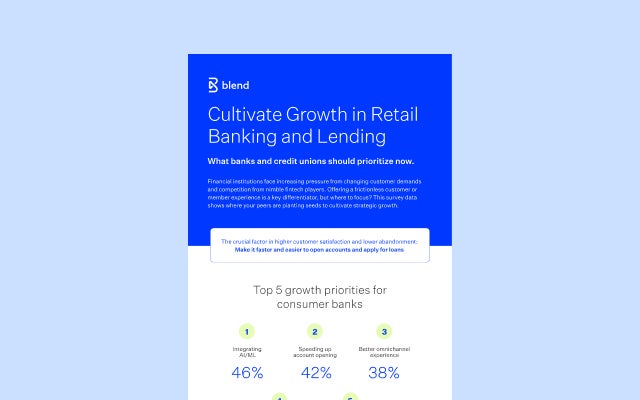November 30, 2022 in Challenges and solutions
3 strategies for driving customer retention in banking
Retain existing and newly acquired customers through personalized experiences, customer feedback, and seamless user journeys.

As a consumer banking leader, you care deeply about maximizing the value of each customer interaction from a cost-maintenance perspective. Shiny, new products and clever, digital experiences may initially draw new customers, but how do you keep the customers you already have?
Retention measures customer loyalty over time, a noteworthy metric given the long-held rule of thumb that it costs five times more to acquire new customers than to keep current ones. Whether or not that specific figure holds in practice, the takeaway is clear: continue investing in your new business mechanisms, but make sure to follow up with strategies optimized to transition today’s transactions into lifelong customers.
Understand your customers’ motivations
When it comes to banking and financial services, PwC’s 2022 Customer Loyalty Survey found that 46% of respondents would leave a financial services or banking brand due to a bad product or service experience. And if that isn’t alarming enough, 32% of respondents said they would drop a company even after inconsistent experiences. Providing — and maintaining — top-tier service at every turn starts with understanding who your customers are and what motivates them.
We can investigate the challenge by looking at two buckets of customers:
- Those who have just become customers and haven’t established loyalty
- Existing customers who stay on because they’re happy with their experiences and the convenience of your institution
Both segments play an important role in growing your business.
Insights for our loyal fans.
Subscribe for industry trends, product updates, and much more.
Newly acquired customers need convincing. They want to know they can trust your team to actively and purposefully help them through life’s expected and unexpected events. They are also likely using multiple financial providers to meet their needs — but they may be looking for signs that you can be their one-stop-shop.
Longer-term customers need reassurance. They have chosen loyalty to you, perhaps because you anticipate their needs and support their goals through innovative tools and user experiences. They may even leverage you for multiple financial needs. But resting on your laurels is not an option — the siren call of competitive, modern services threatens this loyalty.
Here are three strategies that can help drive customer retention in banking for both segments:
Strategy #1: Personalize customer experiences
Consider balancing your digital strategy with consistent and integrated touch points, across multiple channels, tailored toward customer retention. Fifty-five percent of respondents to the PwC survey said human interaction is important when it comes to their loyalty to financial services firms.
Here are a few ways to succeed at customer personalization, whether you’re interacting with new or longtime patrons:
- Loyalty programs and referral rewards
- Timely discounts and rebates on financial offerings, such as closing costs or home appraisals
- Newsletters and well-timed financial advice tailored to the individual’s circumstances
- Actionable resources and educational tools that meet each customer where they are on their financial journey
- Promotions tailored toward a customer’s future needs, such as loans for home improvement after they go through the mortgage process
- Handwritten notes at key milestones, such as birthdays, holidays, or post-loan closings
Delivering personalized value and human connection across all channels of your business can help drive customer retention for the long run.
Strategy #2: Take customer feedback into account
You can tout your top-tier services and technology, but are you actively listening to what your customers are saying? How do they really feel about your products, services, and employee interactions?
Your financial institution can begin by evaluating customer satisfaction through online reviews to gain those valuable insights into your customer preferences and experiences. Unhappy customers will let you know exactly why they dislike your online services or their in-branch experiences. Sending out periodic surveys can also provide feedback and insight into specific product offerings, as well as in-person and on-the-phone customer service.
Listening alone isn’t enough, however. You and your team should be willing to use those insights to evaluate and refine your customer retention approaches. For instance, what can you improve about your products or digital platform based on customer feedback? What strengths can you build upon, and which weaknesses do you need to address in your workflows?
Strategy #3: Create seamless user experiences for new and existing customers
How do you set your institution apart in the increasingly crowded financial ecosystem? Simplicity is the name of the game. Whether a new customer opens a checking account at a physical location or an existing one begins the loan process online, you’ll want to create seamless experiences at every turn.
Meet today’s customer expectations with a technology platform that enables your bank or credit union to deliver experiences that meet your customers’ current and future needs.
Begin with a fast and frictionless onboarding process for new customers, and continue with that same level of ease throughout your customer’s journey, at every touchpoint. This includes everything from the ease of your mobile app, the stellar customer-service interaction at a teller window, or the well-timed product offerings you send to your existing customers.
Every interaction with prospective, new, and existing customers presents an opportunity to expand and deepen relationships, offering a human touch to financial services.
Taking customer retention in banking a step further
Implementing an intuitive, end-to-end digital platform like Blend can help solidify customer retention by not only supporting seamless omnichannel experiences with personalization at the forefront but also enabling teams to focus on customer relationships at every level.

Want more ways to boost customer retention in banking?
Find out what we're up to!
Subscribe to get Blend news, customer stories, events, and industry insights.


